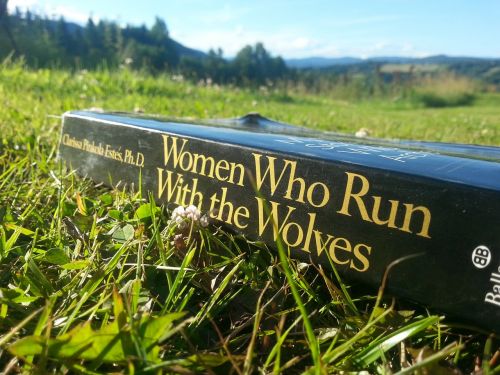DIAGNOSTICOS SOCIOAMBIENTALES
To name your story, you have to think about the overall message and what you want your audience to understand from the story. Also, make it relevant and easy to remember.
ESTRATEGIAS PARA LA SOCIALIZACIÓN
The ending of a story is essential. We all know that if the ending is weak, what happened before loses its importance. So make it unpredictable, but fair. A resolved ending answers all the questions and ties up any loose threads from the plot.
CONTROL SOCIAL
EVALUACIÓN
This is the closure section of the story.
See examples of possible outcomes below:
- all problems have been solved
- it's clear how each one of your characters ends up
- your main character is transformed by the challenge
METODOS Y TECNOLOGIA PARA LA COMUNICACIÓN DE LA INFORMACIÓN.
GARANTIZAR SOSTENIBILIDAD
Try answering these questions to come up with a closure:
- Have all the problems been solved?
- Is there a clear picture of what happens with each character in the story?
- Has the challenge transformed your main character?
- How do the characters feel in the end?
MONITOREO
This is the moment when the main character surpasses the last obstacle and finally faces their greatest challenge.
The climax usually follows one of these patterns:
- realization
- resolution
- choice
Type in your answer.
REALIZADO POR LOS ACTORES SOCIALES
CONSTRUCCIÓN COLECTIVA DE ALTERNATIVAS
The middle of the story is where you add layers of complications that will lead to the end. Reveal more about the character's journey. Did their personality go through changes? How did they overcome the challenges? And as you build up the story’s central conflict, make it more personal to that character. Also, from the middle act, you have to lead into the final act.
REVISIÓN BIBLIOGRAFICA
There wouldn't be any tension and excitement in your story if there weren't any obstacles in your character's way.
ANTECEDENTES Y REFERENTES TEORICOS
A story is nothing more than a character overcoming a series of difficulties to reach the desired goal. Obstacles usually create suspense and conflict. In overcoming obstacles, there is growth: weak becomes strong; hatred turns into love; sadness into happiness; wrong into right; lies into truth; or evil becomes good.
See a few examples below:
- stopping a meteor
- finding a killer
- finding love
APLICACIÓN DE LA METODOLOGIA
INFORMACIÓN DE CONOCIMIENTO VALIOSO
FORMULACIÓN DE PREGUNTAS Y OBJETIVOS DE INVESTIGACIÓN
Your character(s) need(s) motivation in order to solve the challenge(s).
Secondary characters might also have motives that lead them to cross paths with the main character or which might trigger them to help the main character.
INSTRUMENTOS
TECNICAS
DISEÑO METODOLOGICO
Why does your character need to confront this challenge? What does he/she expect to accomplish by solving it?
See a few examples:
- will marry in 3 days
- can fix the mistakes of the past
METODOS
ESTRETEGIAS
DISEÑAR PLAN DE TRABAJO
Each story has a main character and that character usually needs to solve a problem or challenge. The character's challenge is the one that creates tension throughout the story.
IDENTIFICACIÓN DE PROBLEMAS Y CONFLICTOS SOCIOAMBIENTALES
In the beginning of the story (or the exposition), you will need to introduce the setting and characters. You might also want to introduce the main conflict. This part of the story is important because it gives the reader necessary background information and maybe even a first insight into a character’s personality.
EQUIPO DE TRABAJO INTERDISCIPLINARIO
The setting (time & place) of a story can change throughout the plot.
DELIMITACIÓN DEL TEMA DE DIAGNOSTICO
Your story can take place wherever your imagination will take you to.
For example: in an elevator, in an enchanted forest, etc. Don't forget to give details of the environment each time the setting changes, otherwise, the story can be confusing. Also, mention the seasons as each of them has unique weather and events.
TERRITORIO OBJETO DE ESTUDIO
POBLACIÓN OBJETO DE ESTUDIO
PROMOVIDAS POR ENTIDADES PUBLICAS O PRIVADAS
Characters are essential to a good story. Usually, the protagonist(s) is/are the most affected by the plot. Introduce a character by focusing on their actions, interests, and occupation, as the physical appearance doesn't make a difference in most cases.
Responsabilidades
Type in the name of your character.
Other
Add other qualities/attributes of the character.
FASE DE NEGOCIACIÓN
What is your character's main goal?
fight Evilfind lovedefeat his/her enemyrule the worldmake friendstime travelmake an awesome discoveryOther
MATRIZ DOFA
Which traits best describe the character's personality? Choose more if necessary:
introvertedloyalkindindependentquick-thinkingadventuresomeidealisticsweet-naturedcalmrisk-takercreativewittystrictfussyweirdclumsyharshaggressivecarelessclingingcowardlycrueldeceitfulimpulsiveOther
ARBOL DE PROBLEMAS
Choose the type of your chacter:
Protagonist (main character)Antagonist (main character's opponent)Flat (stereotypical character)Round (his/ her personality develops throughout the story)Static (doesn't evolve as a person throughout the story)Dynamic (dramatical change in personality)Confidant (the main character trusts him/ her)Foil (contrasting character who enhances the personality of another character)Other










